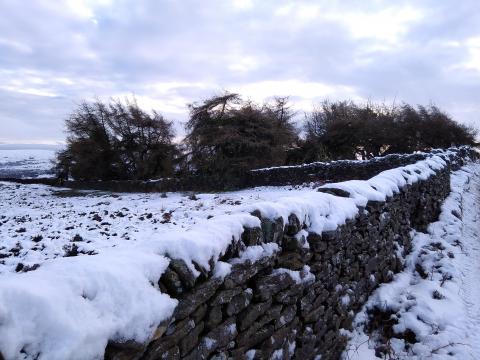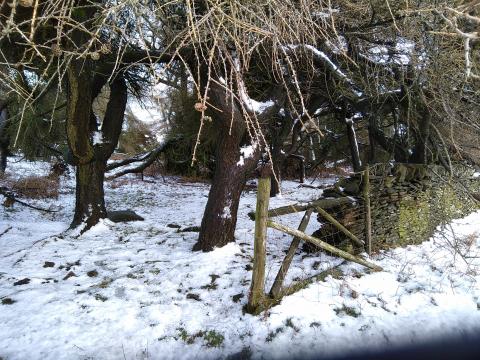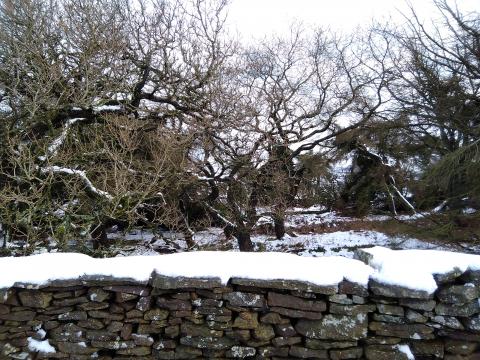Sacred Grove

As one walks along Lister Hill Lane, now part of the Pennine Bridleway between Barnoldswick and Blacko, one passes over Whitemoor. This is an ancient moorland, now a 711 acre country estate known for hunting and fishing. Moorland, by definition, boasts few trees, so good views are commanded, though one soon feels the breeze. Halfway along the track, however, and one comes across a small, walled woodland. The trees inside appear very old, with a number of oaks and spruce growing in a twisted, crouching manner, having spent their years battling the winds. It is not huge, the size of a couple of tennis courts, perhaps. Yet it is walled off and public access is denied, adding to its mystery. It is redolent of those ancient places which were sacred to pre-Christian Germanic, Nordic and Celtic cultures. Druids were said to have operated among groves of oak and the pagan Welsh and Irish hallowed plantations of ash and hazel. Interestingly, a rather more recent shaman wrote:
“So, in accordance with this, my determination to ask of God, I retired to the woods to make the attempt…I kneeled down and began to offer up the desires of my heart to God. I had scarcely done so, when immediately I was seized upon by some power which entirely overcame me, and had such an astonishing influence over me as to bind my tongue so that I could not speak.”
-Joseph Smith, History 1:14-15
In Old Testament Israel, groves of trees lured God’s people to idolatry and sin as much as the ‘high places’ or hill shrines. The two may even have been the same:
Whilst their children remember their altars and their groves by the green trees upon the high hills. -Jeremiah 17:2
In 2 Kings 23:15, we read of one of the reformations in Israel, in which, among other things, sacred groves were destroyed:
Moreover the altar that was at Bethel, and the high place which Jeroboam the son of Nebat, who made Israel to sin, had made, both that altar and the high place he brake down, and burned the high place, and stamped it small to powder, and burned the grove.
Similarly, the destruction of the old groves was high up God’s plans for national judgment:
And I will pluck up thy groves out of the midst of thee: so will I destroy thy cities. -Micah 5:14
Those trees lent their natural beauty and shade to the dark practices of carnal minds. Reducing the light, obscuring the view, shrouding in mystery the doings within, groves were places of idolatrous devotion. Trees themselves are good and proper, objects to be admired for their God-given beauty, strength and usefulness. Yet they, like the stars, must not become the focus of our worship. As I walk through woodlands on my travels, I sometimes find little offerings, tied ribbons, hanging flowers. A farmer friend of mine, owning land next to Lancaster’s university, recalled finding burnt crosses after nocturnal and nefarious gatherings among his trees. Whether this little grove overlooking Foulridge has even been used for such mischief, I do not know. Suffice to say, woodlands have been foci for spiritual disobedience even since the serpent lurked in Eden. Contrast this with the Son of God, who was openly fastened to a sawn tree. When He hung there, He was not hidden, obscured or mysteriously encased, but publicly exposed: the Son of Man bearing the Father’s wrath and the tree’s terrible curse. The gospel is a mystery revealed. It calls us out of our darkness, our hidden corners and concealed afflictions. It brings us into the open light.
Even the mystery which hath been hid from ages and from generations, but now is made manifest to his saints: To whom God would make known what is the riches of the glory of this mystery among the Gentiles; which is Christ in you, the hope of glory. Col 1: 26



- Log in to post comments


 Sunday Worship 10.45am & 6.00pm
Sunday Worship 10.45am & 6.00pm